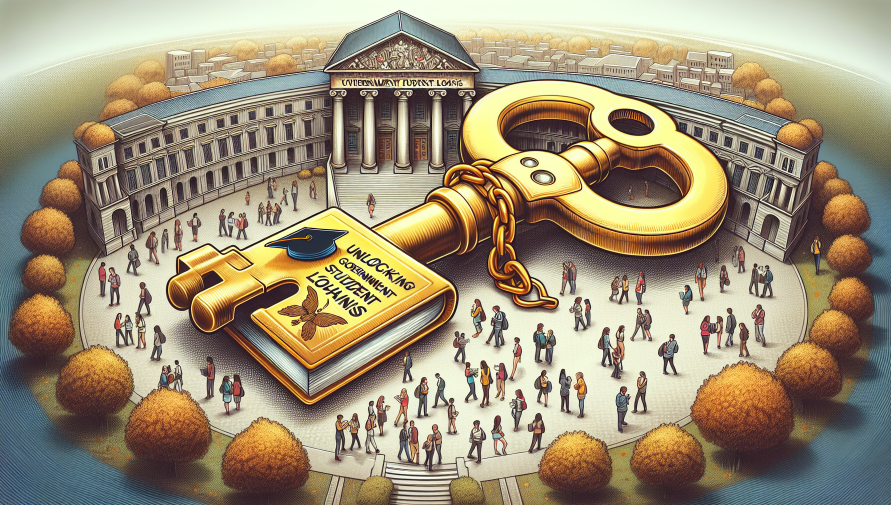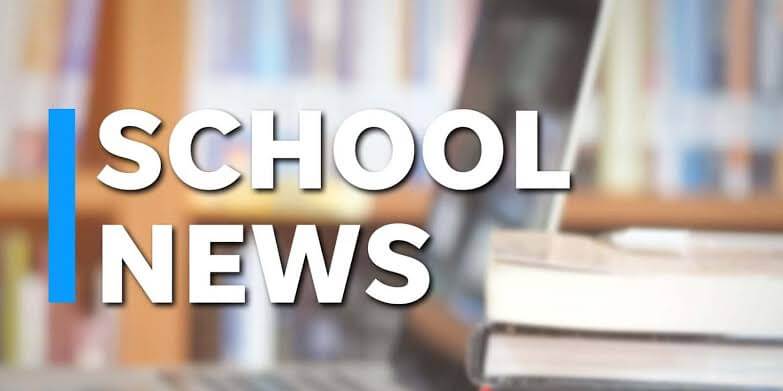Unlocking Government Student Loans: Your Ultimate Guide
Government student loans and federal student loans, offered by the U.S. Department of Education, are a cornerstone in financing higher education for countless students across the nation. These loans are specifically designed to help cover the costs of college, providing a range of options including Direct Subsidized Loans for those with financial need and Direct Unsubsidized Loans for all students, regardless of financial necessity. Moreover, government student loans often come with benefits absent in private loan offerings, such as lower interest rates and flexible repayment plans, making them a more advantageous choice for students.
Embarking on the journey of applying for a student loan can be a complex process, navigating through FAFSA applications, understanding the various loan options such as Direct PLUS Loans for graduate students and parents, and learning about loan forgiveness programs. This guide aims to unlock the intricacies of government student loans, providing you with an ultimate roadmap from application to repayment, and exploring federal financial aid to ensure your educational aspirations are met with the right financial support.

Understanding the Different Types of Government Student Loans
Navigating through the array of government student loans can initially seem daunting. To simplify, let’s break down the four main types of federal student loans available to students and parents:
- Direct Subsidized Loans
-
- Eligibility: Undergraduate students with demonstrated financial need.
- Interest: Direct Subsidized Loans: Paid by the U.S. Department of Education while you’re in school at least half-time, for the first six months after you leave school (grace period), and during a period of deferment.
- Annual Loan Limits: Ranges from $3,500 for first-year students to $5,500 for second-year students.
- Direct Unsubsidized Loans
-
- Eligibility: Undergraduate, graduate, and professional students; no financial need required.
- Interest: Borrowers are responsible for all interest.
- Annual Loan Limits: Loan Limits: Varies by education level and dependency status, from $5,500 for first-year dependent undergraduates to $10,500 for independent students in their second year and beyond.
- Direct PLUS Loans
-
- Eligibility: Direct PLUS Loans: Available to graduate or professional students and parents of dependent undergraduate students; requires a credit check.
- Interest: Borrowers are responsible for all interest.
- Loan Amount: Up to the total cost of attendance minus any other financial aid received.
- Direct Consolidation Loans
-
- Purpose: Consolidating federal education loans is streamlined by allowing borrowers to merge multiple loans into one, serviced by a single loan servicer, simplifying the repayment process.
- Interest Rate: The interest rate for consolidated loans is fixed, calculated as the weighted average of the rates on the loans being consolidated, ensuring a predictable monthly payment.
- Fees: No loan fee for Direct Consolidation Loans.
Understanding the nuances of Government Student Loans types is crucial, especially when strategizing on how to save money on college, including considerations such as interest repayment options. For example, Direct Subsidized Loans have the advantage of the government covering your interest during deferment periods, but with Direct Unsubsidized plus Loans, you’re responsible for all interest accrued. Moreover, opting for a Direct Consolidation Loan can streamline your payments but might limit access to certain forgiveness programs, so it’s important to learn how to save money as a college student.
When exploring federal student loans, it’s wise to prioritize them over private loans, which lack federal benefits like income-driven repayment plans or forgiveness programs. Private loans often have higher interest rates and less flexibility, so maximizing student saving strategies with federal loans is recommended.
Navigating the Application Process for Government Student Loans
Initiate your journey to secure educational funding by following these essential steps to apply for government student loans, a pivotal move in how to start saving money for college.
- Check Your Eligibility
-
- Be a U.S. citizen or an eligible non-citizen.
- Have a valid Social Security Number.
- Demonstrate financial need.
- Gather Required Documents
-
- Your Social Security card and, if applicable, your driver’s license.
- Federal income tax returns, W-2s, and other records of money earned.
- Bank statements and records of investments (if any).
- Records of untaxed income (if any).
- Complete the FAFSA
-
- Begin your savings plan by visiting the FAFSA website to fill out the application, which will assess your Expected Family Contribution (EFC), an important step in how to save money for students.
- To maximize your chances of receiving aid, it’s crucial to submit the FAFSA before the deadline; aid is distributed on a first-come, first-served basis, which is a fundamental aspect of how to save money as a student.
After submitting your FAFSA, here’s how to proceed:
- Review Your Student Aid Report (SAR)
-
- Once FAFSA processing is complete, you’ll receive your SAR. It’s essential to review it for any inaccuracies and make necessary corrections, which is a proactive step in saving money as a student.
- Understand Your Financial Aid Offer
-
- Based on your SAR, your chosen colleges will extend financial aid offers, which may encompass federal student loans, grants, and work-study options—key components of money saving tips for students.
- Leverage the college search tool to confirm if your school is a participant in federal student aid programs, a strategic move for savings for college students.
- Final Steps
-
- Accept the student loan offer through your school’s financial aid office.
- Complete entrance counseling to understand your borrower responsibilities.
- Sign your Master Promissory Note (MPN) to agree to the loan terms.
- Remember to renew your FAFSA application every year to maintain eligibility.
By diligently following these steps, you’re navigating the path towards applying for and securing government student loans to support your education. Remember, college student savings hinge on meeting all deadlines and ensuring the accuracy of your information to maximize your financial aid.
Repayment Plans and Strategies of Government Student Loans
Understanding the various repayment plans for government student loans is crucial for effective money management tips for students. Here’s an overview to guide you in selecting the most suitable strategy for your financial situation:
- Standard Repayment Plan:
-
- Duration: 10 years
- Benefits: Pay less interest over time compared to other plans
- Ideal for: Borrowers looking to clear their debt quickly and save on interest
- Income-Driven Repayment (IDR) Plans:
-
- Duration: 20 or 25 years, depending on the specific plan
- Monthly Payments: Tied to a portion of your income
- Forgiveness: Remaining debt forgiven after the repayment period, subject to taxes
- Ideal for: Borrowers with a lower income relative to their debt
- Graduated Repayment Plan:
-
- Duration: 10 years
- Payments: Start lower and increase every two years
- Ideal for: Borrowers expecting their income to increase over time
- Extended Repayment Plan:
-
- Options: Fixed or graduated payments over 25 years
- Ideal for: Borrowers needing lower monthly payments over a longer period
To make a well-informed choice, take advantage of the Education Department’s Loan Simulator. This invaluable tool offers a personalized comparison of your potential debts across different plans, aiding you to pinpoint the option that best fits your financial objectives and is a practical save money tip for students.
For students aiming to minimize expenses, exploring ways to save money as a student through loan forgiveness is key, especially under the Public Service Loan Forgiveness (PSLF) program. It’s essential to understand that only payments made under the Standard Repayment Plan or an Income-Driven Repayment (IDR) plan are considered. After 120 qualifying payments, those eligible for PSLF could have their remaining balance forgiven tax-free, which can lead to substantial savings.
When contemplating the refinancing of private student loans for a lower interest rate, it’s wise to ensure your credit score is robust, ideally in the high-600s, to secure the best terms. Federal student loans are often the more advantageous choice for many students, offering lower interest rates and more borrower protections than private loans, which aligns well with a money saving plan for students.
Deferment, Forbearance, and Loan Forgiveness Programs
Grasping the nuances of managing government student loans during tough times is imperative. Here’s an overview of deferment, forbearance, and loan forgiveness programs, which are essential budgeting tips for students looking to navigate their financial options:
- Deferment and Forbearance
-
- Deferment: Deferment represents a temporary halt on loan payments, which is typically available for students enrolled at least half-time. For most federal loans, interest on subsidized loans is covered by the government during this period, aiding in saving money in college. However, unsubsidized loans accumulate interest, which is later added to the total loan balance once the deferment concludes.
- Forbearance: Forbearance is an option when you’re unable to make payments due to financial hardship or illness, and it’s one of the easy ways to save money in college in the short term. Be aware that interest continues to accrue during forbearance and is capitalized, which can make it a more costly option in the long run.
- Loan Forgiveness Programs
-
- Public Service Loan Forgiveness (PSLF): Loan forgiveness is a beacon of financial relief, forgiving the remaining balance on Direct Loans after 120 qualifying monthly payments under a qualifying repayment plan. This is particularly beneficial for those saving in college while working full-time for a qualifying employer.
- Teacher Loan Forgiveness: The Teacher Loan Forgiveness program offers up to $17,500 in forgiveness on certain federal loans for full-time, highly qualified teachers who have dedicated five consecutive years to teaching in a low-income school or educational service agency, providing a significant financial reprieve.
- Borrowers’ Defense to Repayment: For students defrauded by their schools, offering a path to loan forgiveness.
- Total and Permanent Disability Discharge (TPD): Forgives federal student loans for borrowers who become totally and permanently disabled.
- Recent Developments and Adjustments
-
- The Biden-Harris Administration has taken steps against loan servicers for failing to send timely billing statements, placing affected borrowers into administrative forbearance until resolved.
- Certain deferment and forbearance periods, including COVID-related forbearance since March 2020, may count towards loan forgiveness under the Biden administration’s policies.
- The IDR Account Adjustment extends benefits similar to the PSLF Waiver, allowing some deferments and forbearances to count towards IDR and PSLF forgiveness after temporary programs end. Borrowers with FFEL, Perkins, or HEAL Program loans should consider applying for a Direct Consolidation Loan by May 1, 2023, to maximize benefits.
Navigating through these options can provide relief during financial hardships or significant life changes. Always consider the long-term implications of interest accumulation and capitalize on forgiveness opportunities where applicable. Incorporating money saving tips into your repayment strategy can further alleviate the financial strain of student loans.
Conclusion
Navigating the labyrinth of government student loans can initially seem overwhelming, yet understanding the nuts and bolts of each loan type, the application process, repayment strategies, and available relief programs is crucial for students aiming to finance their higher education effectively. Throughout this guide, we’ve explored everything from the differences between subsidized and unsubsidized loans to detailed insights on deferment, forbearance, and loan forgiveness, aiming to provide a comprehensive roadmap to assist students and parents in making informed financial decisions. These insights not only help in selecting the most suitable loan options but also in devising a prudent repayment plan, ultimately helping to save money and alleviating the financial burden of pursuing higher education.
The path to securing educational funding through the complexities of government student loans is daunting but armed with the right information, students can unlock the potential of these financial resources to support their academic journey. By taking informed steps toward loan application, understanding the nuanced repayment plans, and staying abreast of forgiveness programs, borrowers can effectively manage their student loans. This strategic approach not only makes educational aspirations more attainable but also contributes to saving money over the long term. For those ready to take the next step towards securing their financial aid for education, commence your application process by exploring the available your loan options and apply now.
Remember, the journey to a debt-free education begins with understanding your options and making empowered decisions tailored to your unique financial situation





